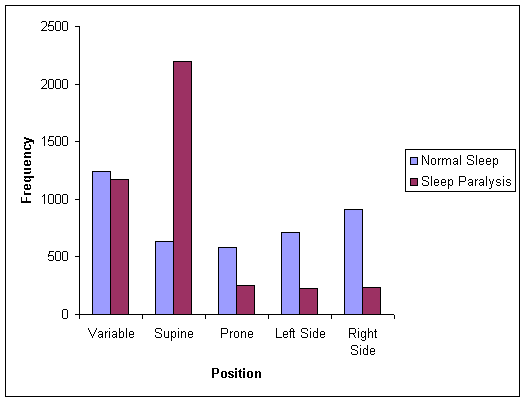Muscle atony during REM phases
Sleepwalking and so-called night terrors usually occur early in the night during sleep stages III and IV and never during REM phases because bodily muscles are by and large inhibited then, eliciting a special sort of paralysis (Woods & Greenhouse, 1974, pp. 334 -335; Jouvet, 1994, p. 52, pp. 108-9; Schatzman & Fenwick, 1994, p. 214; Shafton, 1995, p. 20). Shafton wrote, though, "While large movements are inhibited during REM sleep, very fine movements of limb muscles actually increase. These small twitchy actions seem roughly related to the concurrent dream scenario, both with respect to the part of the body moved (upper or lower), and with respect to intensity". Continuing, Shafton went on to write that Prof. Inge Strauch, of the University of Zürich, found that "smiling muscles are active during dreams which contain positive emotions (and also during dreams of speaking), whereas brow-knitting muscles are active during negatively toned dreams (and also during dreamt social signals of attention and concentration)" (Ibid, p. 19).
Shafton also provided examples in which the "atony" associated with REM phases seems to break down and movements sometimes occur which can even be dangerous, both to the dreamer as well as to persons sleeping in the same bed. He wrote that the reverse can occur in which a person awakens, but is still paralyzed (Ibid., p. 20). This can be very terrifying for the person who experiences it.
On the other hand, it is now known that both eye movements as well as erections during sleep are normally not associated with dream content, but seem to occur independently as neurological phenomena (Moscowitz & Berger, 1969, p. 614). Periodic erections have been found to occur even in the absence of REM phases (Shafton, 1995, p. 18). Even persons blind from birth who have no visual imagery in their dreams still have REM phases (Koulack, 1991, p. 52). Eye movements made intentionally during what are known as lucid dreams, however, form a conspicuous exception to this precept (LaBerge, 1988, p. 148).
It seems that talking in sleep occurs 75% of the time in NREM phases and, when it occurs during a REM phase, it is associated 80% of the time with what is occurring in a dream (Shafton, 1995, p. 19).
Additional information about sleep paralyis (or atony) can be obtained by clicking here.
Previous section Next section List of sections List of chapters

